The Kurdistan Region of Iraq (KRI) is distinguished by its rugged landscapes and a conflict-ridden history. However, a recurring menace looms large among these challenges: landmines, which are leftovers of past conflicts that continue to imperil lives. In this context, Hoshyar Ali’s life stands out as a symbol of tenacity and unshakable commitment. His story goes beyond the usual hero’s journey, forging a path defined by altruism, dedication, and an unrelenting spirit in saving lives within the KRI.
Early life
Born in the tranquil village of Biawela in Halabja province, Hoshyar Ali’s childhood resonated with the innocence of youthful joys, particularly his love for football and dreams of sporting triumphs. Yet the tranquility of his upbringing was disrupted by the ravages of war. Hoshyar’s life took an unexpected turn from the football field to the front lines, propelled by a profound sense of Kurdish identity and a fervent desire to protect his people’s rights.
Hoshyar embarked on his journey into mine clearance over three decades ago, sparked by a growing awareness of the perilous threat posed by landmines in his community. It was in 1989, the year he embarked on this mission, that tragedy struck. A landmine explosion claimed his right leg, an excruciating sacrifice that failed to break his resolute spirit. Undeterred by this devastating loss, he persisted in his mission, only to suffer another grievous blow in 1994, losing his left leg to another landmine explosion. Despite these harrowing setbacks, Hoshyar’s resolve remained unshakable.
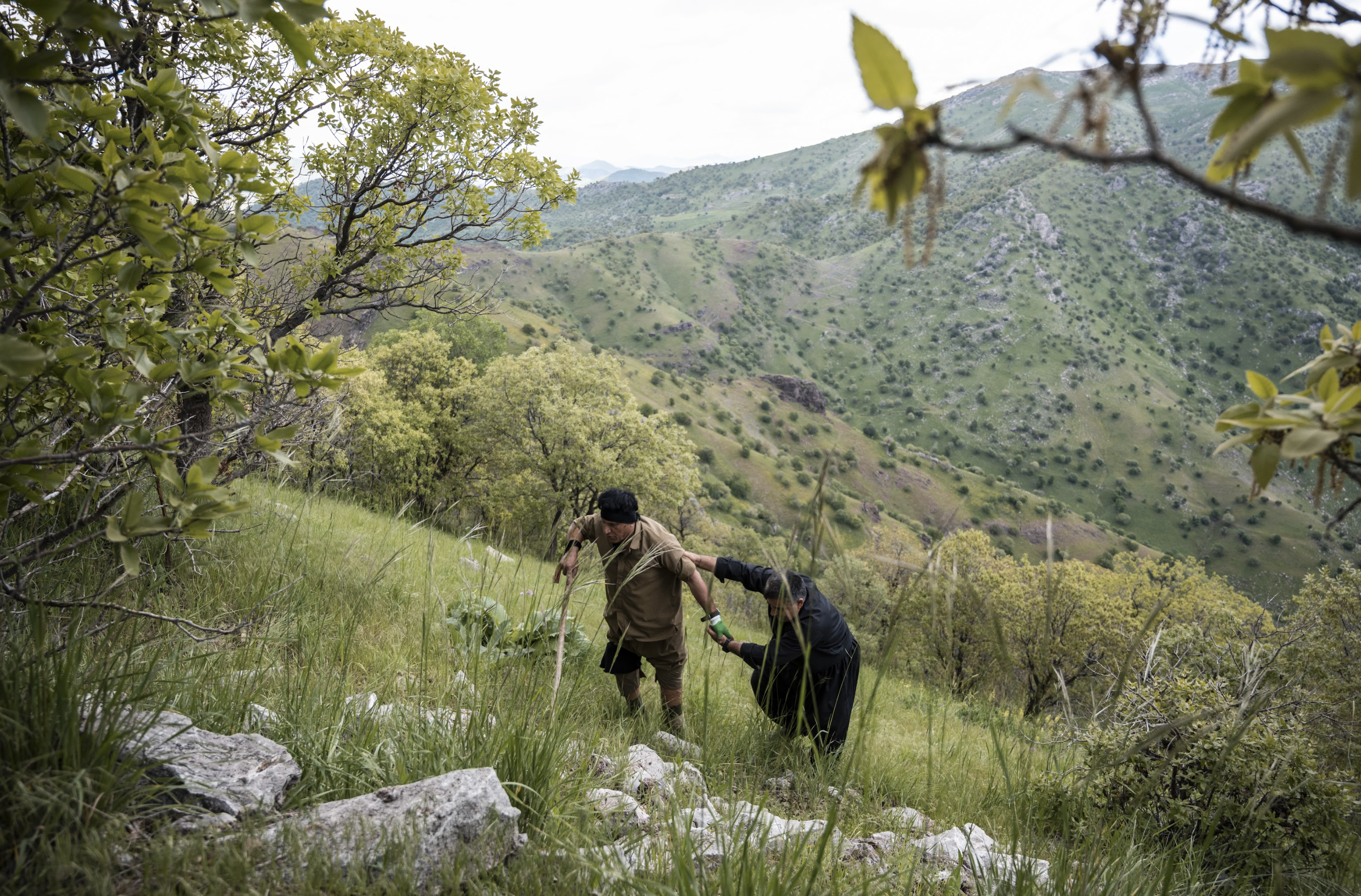
The weight of loss and continued service
War extracted a heavy toll on Hoshyar. The aspiring footballer experienced personal tragedies, including the loss of his two sons. His eldest son, Barez, died in a tragic landmine incident at the age of 17. Nevertheless, Hoshyar persisted in his mission, actively participating in the fight against ISIS in southern Kirkuk in 2015, courageously defusing bombs planted by extremist militants.
Hoshyar’s roots trace back to the profound Kurdish heritage of Halabja and the Hawraman area. His marriage to Gelas in 1989 was overshadowed by subsequent tragedies, including the loss of his sons. Furthermore, his mother, a witness to the liberation of Kirkuk in 1991, passed away before Hoshyar’s return from the front lines, where he served as a member of the peshmerga. Hoshyar’s legacy extended far beyond personal losses; he guided peshmerga forces through treacherous terrains, confronting mine explosions in the mountainous regions of Garmian and Khoshko.

Recognition and legacy
Hoshyar’s significant contributions to mine clearance and the protection of life are immortalized throughout the KRI. The village of Kuri Gapla stands as a poignant testament to his herculean endeavors. Renamed “Hoshyari” in honor of his relentless efforts to clear it of deadly mines, the village’s new name echoes the deep gratitude and reverence of its inhabitants for his selfless sacrifices.
Hoshyar’s legacy extends beyond Kuri Gapla. The Penjwen District stands adorned with numerous reminders of his indomitable spirit and courage. Schools, hospitals, mosques, police stations, and even a border gate bear his name, a profound acknowledgment of his exceptional service and dedication. His impact resonates not just in physical locations but in the hearts and lives of countless individuals who have been touched by his unwavering commitment to the safety and well-being of the community. The renaming of these places not only commemorates his efforts but serves as a perpetual reminder of the resilience and bravery that continue to define Hoshyar Ali’s legacy in Kurdistan.
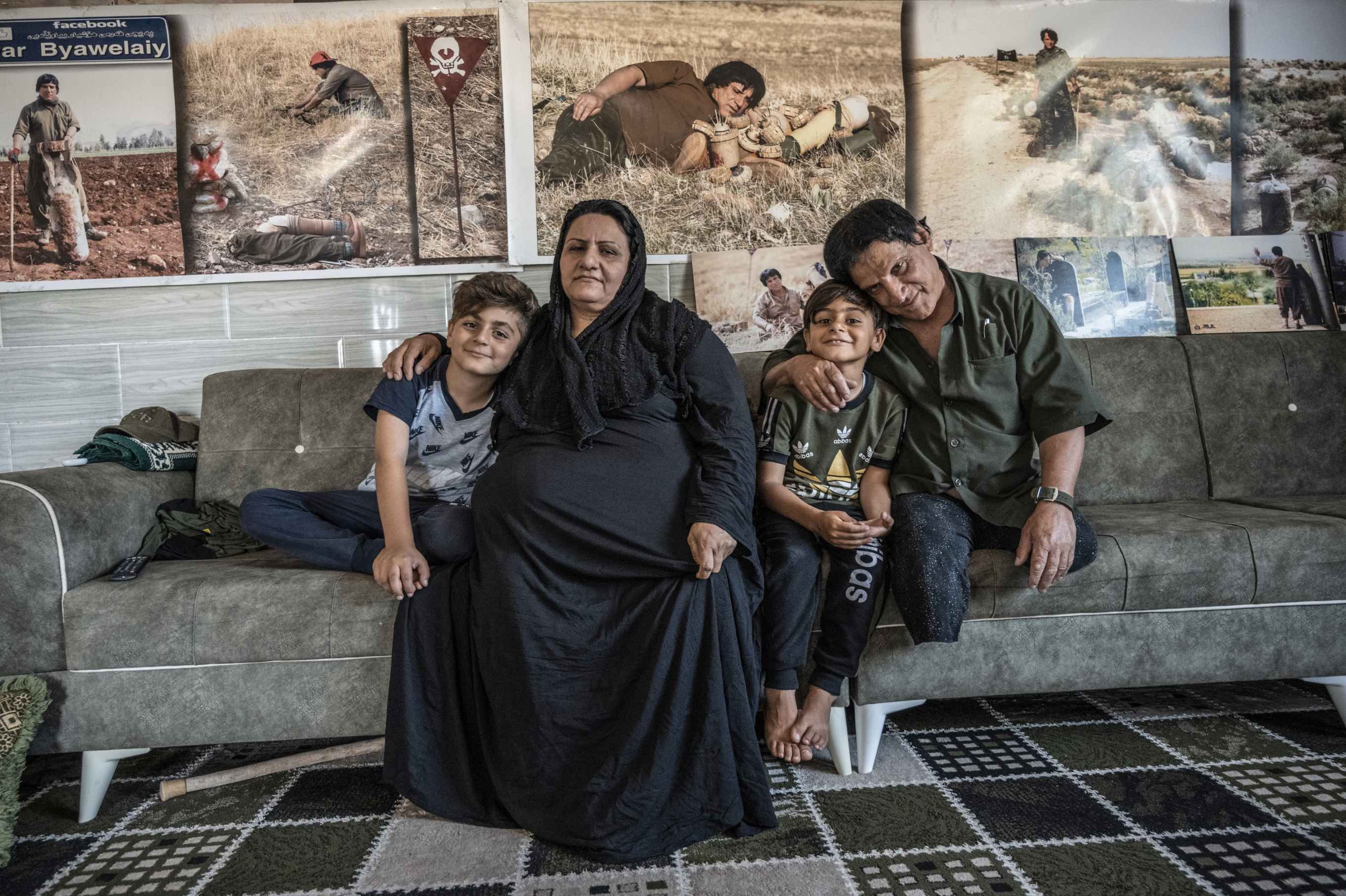
Acts of bravery
Hoshyar Ali’s valor and commitment extended beyond the realms of professional duty, as evidenced by a gripping incident that unfolded during an illegal border crossing to Iran. In a perilous moment teetering on the brink of tragedy, his wife Gelas unwittingly stepped onto a concealed landmine. Displaying remarkable composure and swift action born from years of expertise, Hoshyar detected the lurking danger beneath her feet.
In a heart-stopping moment, Hoshyar’s instincts and mine clearance expertise came to the fore. With steely determination and unwavering focus, he meticulously defused the hidden explosive device, averting what could have been a catastrophic and irreparable loss. His selfless act of heroism not only spared his beloved wife’s life but also stood as a testament to Hoshyar’s commitment to protecting and preserving lives, even in the most perilous of circumstances.
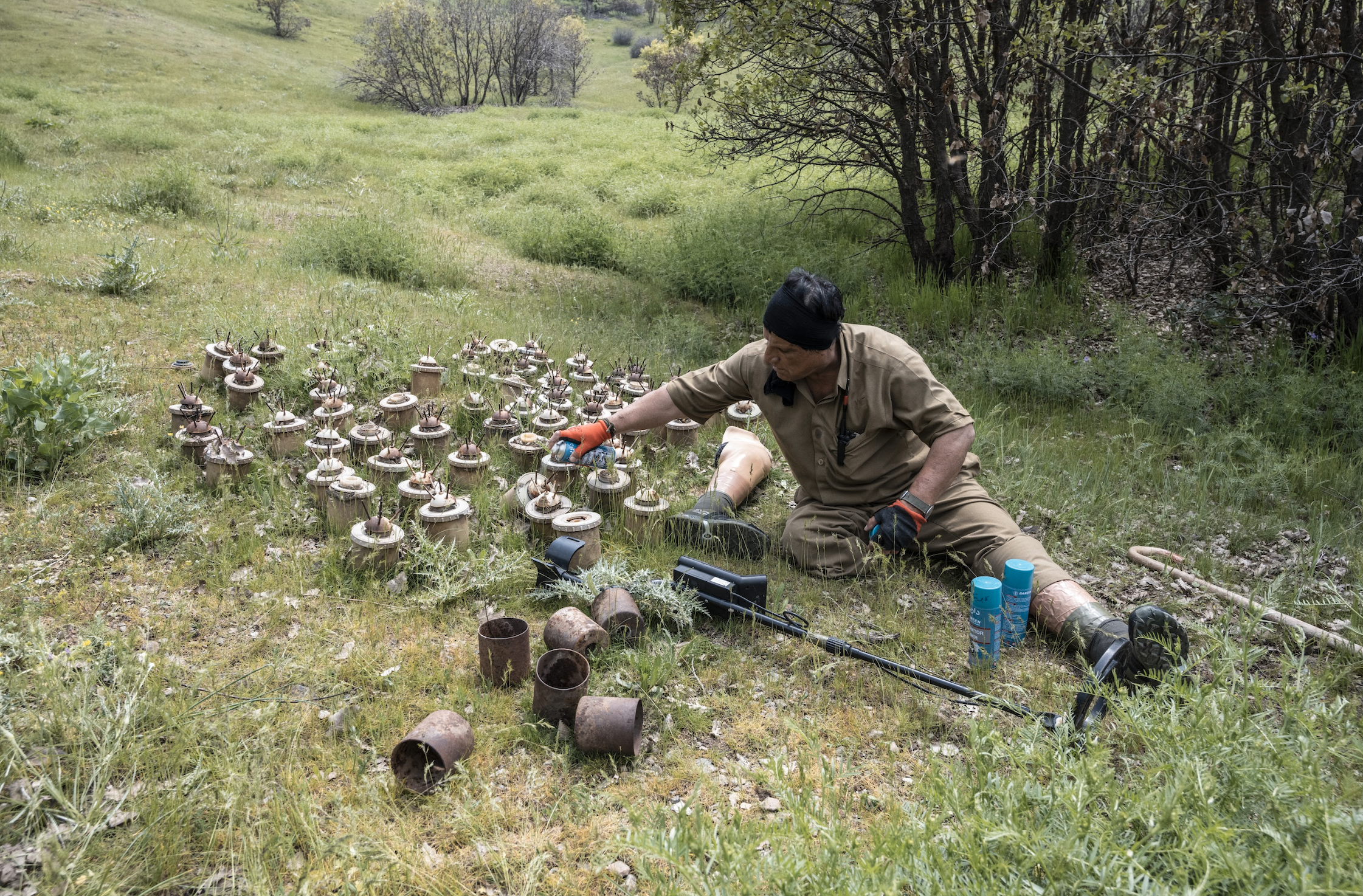
The daily struggle
Hoshyar’s routine epitomizes a courageous dance with danger. Every day, he ventures into villages, confronting the specter of death as he painstakingly removes landmines. His prosthetic legs, acquired through a journey to Japan facilitated by Japanese non-governmental organization Peace Winds Japan, empower him to fulfill his mission with a determination that transcends mere duty. Despite grappling with mobility challenges and the enduring weight of profound personal tragedies, Hoshyar remains committed to safeguarding lives and ensuring the safety of others.
Starting his mine clearance mission following training in Ahvaz, Iran, Hoshyar has so far defused more than 2 million landmines and improvised explosive devices, rescued 182 people from minefields, cleared 104 villages of landmines, successfully demined 540 square kilometers of land, and conducted mine awareness campaigns at approximately 700 schools in the KRI, according to local authorities. Remarkably, much of his extraordinary work has been achieved without the use of his legs.
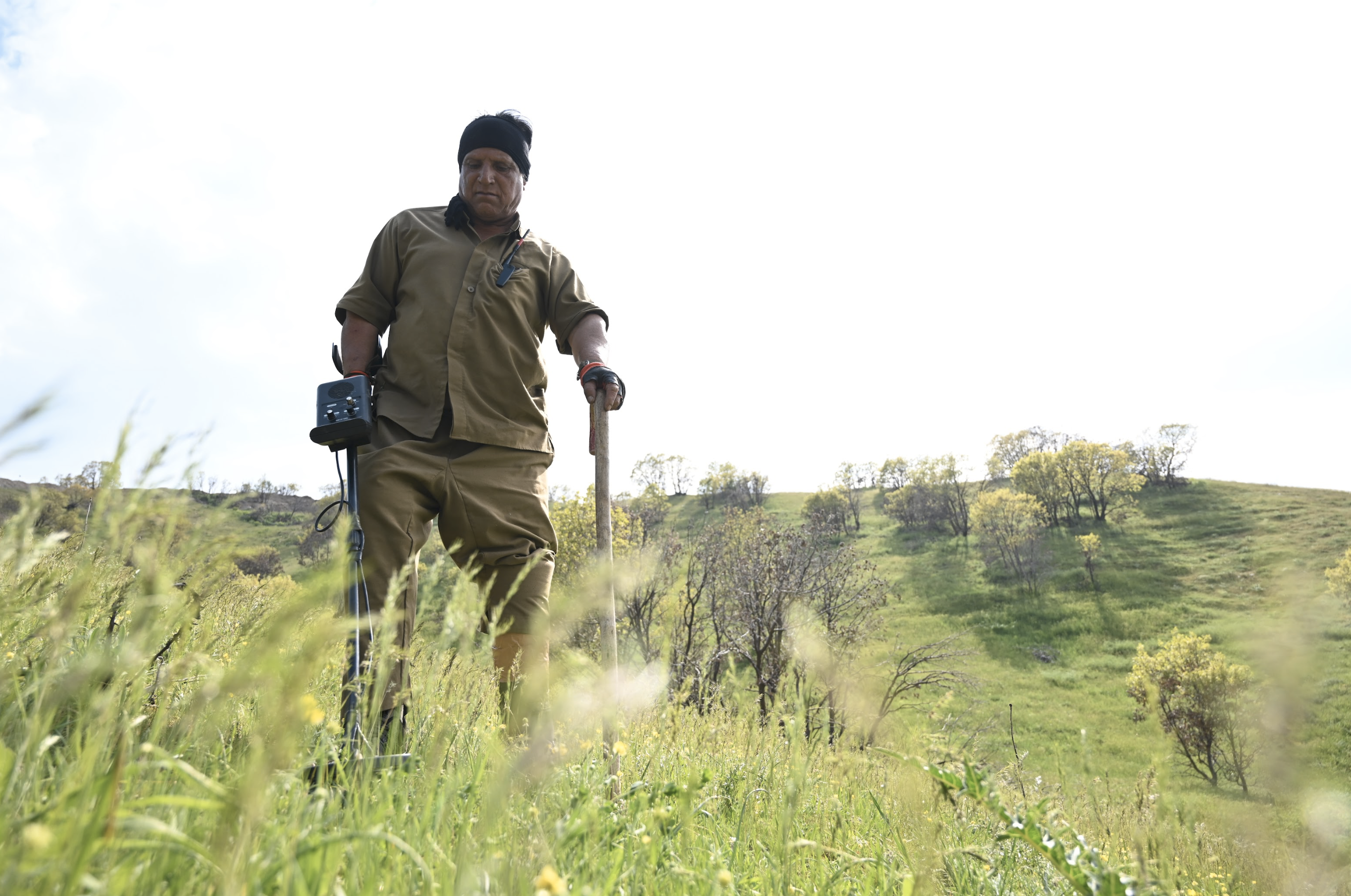
A call to vigilance
The Kurdistan Region remains riddled with landmines, particularly along the border with Iran, remnants of the Iran-Iraq War of 1980-1988. Despite the conflict’s conclusion 35 years ago, approximately half of the landmines placed during that time persist. Iraq has the highest landmine concentration of any country in the world, covering a staggering 650 million square meters, with nearly half of this threat within the KRI.
Between 2019-2023, the Iraqi Kurdistan Mine Action Agency achieved the clearance of over 5 million square meters of minefields in the KRI, according to a statement from the Kurdistan Regional Government. Despite the haunting scars of personal tragedies and the daily mobility challenges that he faces, Hoshyar remains resolute. His earnest plea to the people reverberates: “When you walk through the mountains of Kurdistan, be vigilant, for hidden around every corner may lie the silent specter of a bomb.”
Hoshyar Ali's life and work transcend mere duty. They represent the resilience of the Kurdish spirit, earning him immense respect and adoration from the people. His bravery has safeguarded countless lives, including that of his wife Gelas, serving as a poignant reminder of the profound impact of an individual’s unwavering dedication amid adversity.
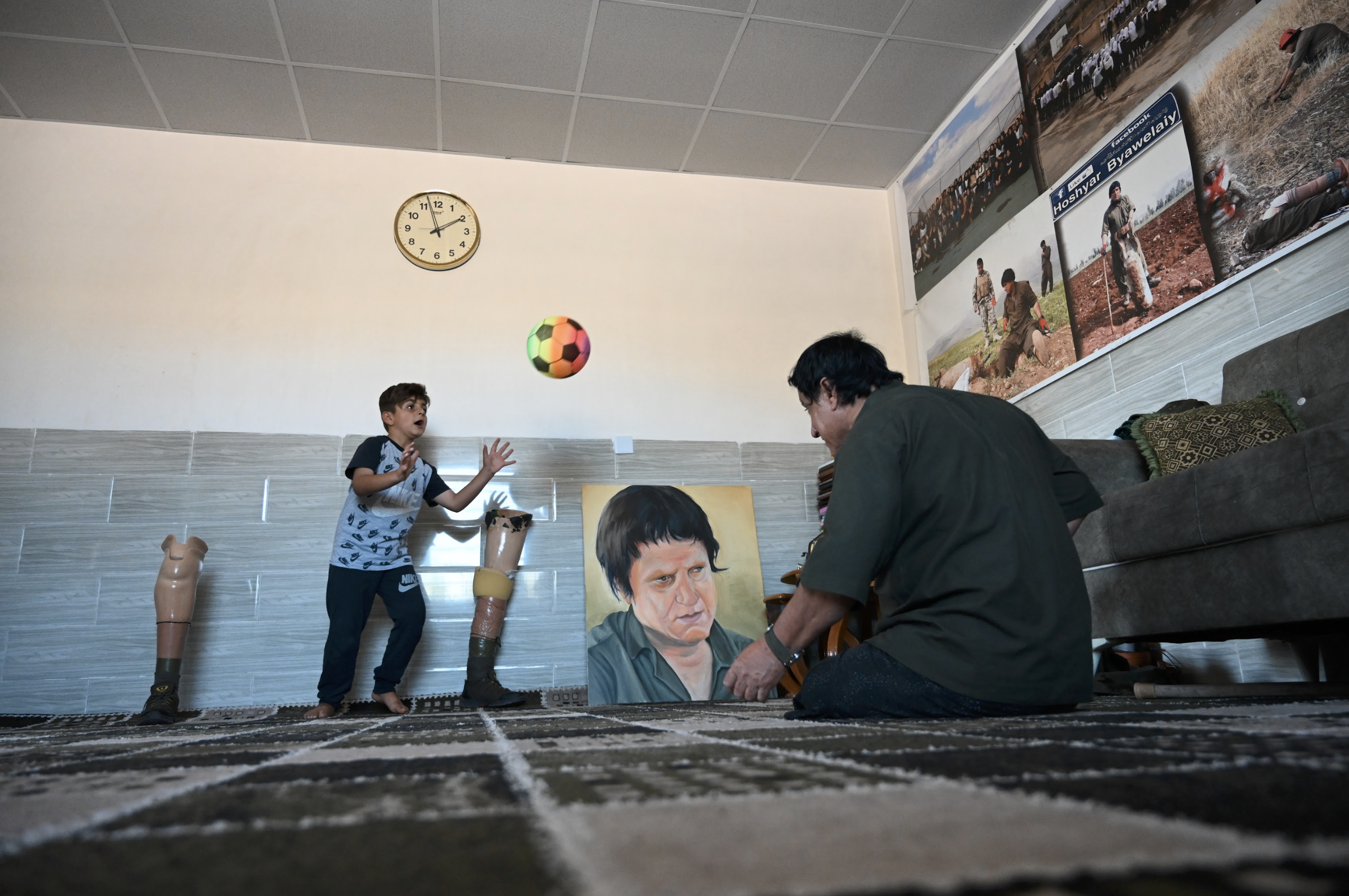
Peshraw Mahdi is a freelance journalist and photographer with substantial experience in the field, having worked for numerous media agencies over several years. He has won multiple awards in photojournalism.